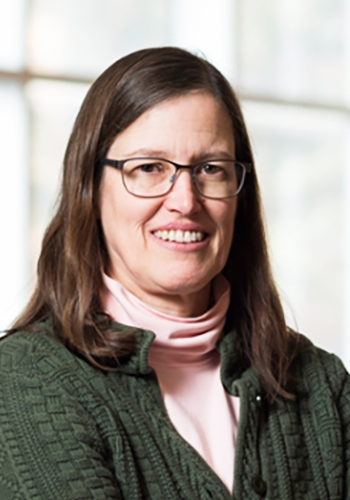
Laurel H. Carney
Marylou Ingram Professor in Biomedical Engineering
Professor of Biomedical Engineering
Professor of Neuroscience
PhD, University of Wisconsin, 1989
- Office Location
- 5-6438 Medical Center
- Telephone
- (585) 276-3948
- Web Address
- Website
Biography
Laurel Carney received her bachelor's degree in electrical engineering from MIT and her masters and doctoral degrees, also in electrical engineering from the University of Wisconsin at Madison. She then took a postdoctoral fellowship in psychology at the University of Pennsylvania, before accepting her first faculty position at Boston University in 1991. She was promoted to associate professor there and was also associate chair of graduate studies. In 2004 she moved to Syracuse University as a full professor in biomedical engineering and neuroscience. In 2007 she came to the University of Rochester as a full professor in the Department of Biomedical Engineering. She has received numerous honors and awards both for her research and her teaching. She has won outstanding professor of the year awards at both Boston University and the University of Rochester. She is a fellow of the Acoustical Society of America and of the American Institute for Medical and Biological Engineering.
Research Overview
We combine neurophysiological, behavioral, and computational modeling techniques towards our goal of understanding neural mechanisms underlying the perception of complex sounds. Most of our work is focused on hearing in listeners with normal hearing ability. We are also interested in applying the results from our laboratory to the design of physiologically based signal-processing strategies to aid listeners with hearing loss.
We are currently studying two specific problems: detection of acoustic signals in background noise, and detection of fluctuations in the amplitude of sounds. These problems are of interest because they are tasks at which the healthy auditory system excels, but they are situations that can present great difficulty for listeners with hearing loss. We study the psychophysical limits of ability in these tasks, and we also study the neural coding and processing of these sounds using stimuli matched to those of our behavioral studies. Computational modeling helps bridge the gap between our behavioral and physiological studies. For example, using computational models derived from neural population recordings, we make predictions of behavioral abilities that can be directly compared to actual behavioral results. The cues and mechanisms used by our computational models can be manipulated to test different hypotheses for neural coding and processing.
By identifying the cues involved in the detection of signals in noise and fluctuations of signals, our goal is to direct novel strategies for signal processors to preserve, restore, or enhance these cues for listeners with hearing loss.
Research Interests
- Auditory neuroscience; neurophysiological behavioral, and computational studies of hearing; signal processing for hearing aids
